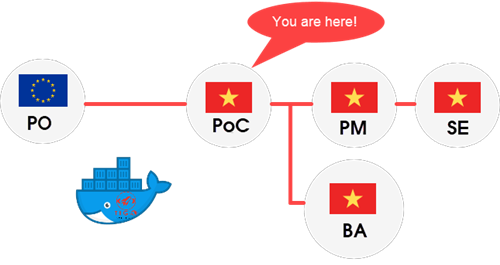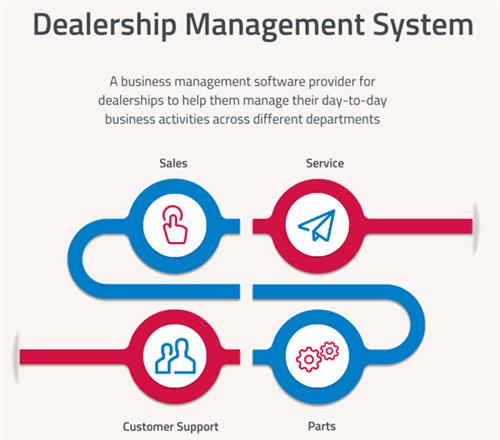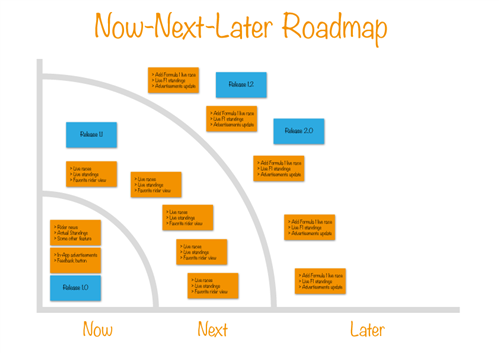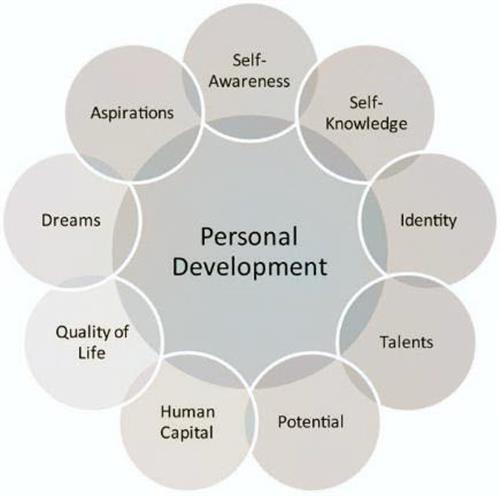
A Deep Dive into Odoo: Benefits, Drawbacks, Strategic Fit, and Investment Models
Last updated: October 17, 2024 Read in fullscreen view
- 05 Oct 2025
 The New Facebook Algorithm: A Paradigm Shift in Content Discovery 19/46
The New Facebook Algorithm: A Paradigm Shift in Content Discovery 19/46 - 21 Apr 2021
 Most frequently asked questions about Odoo ERP 16/1175
Most frequently asked questions about Odoo ERP 16/1175 - 03 Nov 2023
 Why Is Billable Viable Product An Alternative To Minimum Viable Product? 12/165
Why Is Billable Viable Product An Alternative To Minimum Viable Product? 12/165 - 10 Aug 2021
 Build A Marketplace Website with Odoo ecommerce 10/730
Build A Marketplace Website with Odoo ecommerce 10/730 - 20 Oct 2022
 Odoo roadmap for beginners and small businesses 9/1018
Odoo roadmap for beginners and small businesses 9/1018 - 30 Jul 2024
 The Future of IT Consulting: Trends and Opportunities 8/131
The Future of IT Consulting: Trends and Opportunities 8/131 - 18 Jul 2024
 The 8 Best ways to Innovate your SAAS Business Model in 2024 8/205
The 8 Best ways to Innovate your SAAS Business Model in 2024 8/205 - 02 Oct 2022
 The Real Factors Behind Bill Gates’ Success: Luck, Skills, or Connections? 8/300
The Real Factors Behind Bill Gates’ Success: Luck, Skills, or Connections? 8/300 - 27 Jul 2024
 Positive Psychology in the Digital Age: Future Directions and Technologies 6/337
Positive Psychology in the Digital Age: Future Directions and Technologies 6/337 - 01 Jan 2023
 Senior Odoo Business Developer - Job Detail 6/513
Senior Odoo Business Developer - Job Detail 6/513 - 01 Nov 2023
 Unlocking the power of Odoo 17 - What are the new and improved features? 5/328
Unlocking the power of Odoo 17 - What are the new and improved features? 5/328 - 08 Aug 2022
 Scale-up! The ultimate business game to learn business operations before you get started 5/521
Scale-up! The ultimate business game to learn business operations before you get started 5/521 - 11 Oct 2022
 Why choose Billable Viable Product (BVP) over Minimum Viable Product (MVP) 5/315
Why choose Billable Viable Product (BVP) over Minimum Viable Product (MVP) 5/315 - 01 Apr 2025
 How to Manage Social Media Marketing with Odoo 5/104
How to Manage Social Media Marketing with Odoo 5/104 - 03 Dec 2024
 CRM Solutions on the Odoo Platform 4/17
CRM Solutions on the Odoo Platform 4/17 - 10 Apr 2022
 Odoo Dealership Management 4/522
Odoo Dealership Management 4/522 - 14 Dec 2021
 Odoo - the Right Software for Your Digital Transformation? 4/390
Odoo - the Right Software for Your Digital Transformation? 4/390 - 08 Nov 2022
 Considerations in revolutionizing your business with Odoo 3/250
Considerations in revolutionizing your business with Odoo 3/250 - 18 May 2022
 Odoo Employee Contract Portal Self Service 3/617
Odoo Employee Contract Portal Self Service 3/617 - 12 Oct 2022
 Why is ODOO end-to-end business management software? 3/305
Why is ODOO end-to-end business management software? 3/305 - 29 Nov 2019
 Odoo Website Builder Allows You to Make Your Own Website 3/673
Odoo Website Builder Allows You to Make Your Own Website 3/673 - 23 Aug 2022
 How to Create Qweb Report in Odoo 16? 3/808
How to Create Qweb Report in Odoo 16? 3/808 - 27 Feb 2025
 How AI Agents are Changing Software Development? 3/170
How AI Agents are Changing Software Development? 3/170 - 10 Feb 2022
 Odoo Implementation Services - Let Us Be the Icing 3/343
Odoo Implementation Services - Let Us Be the Icing 3/343 - 09 Oct 2024
 Short-Form Video Advertising: The Secret to Captivating Your Audience 3/107
Short-Form Video Advertising: The Secret to Captivating Your Audience 3/107 - 09 Apr 2025
 Odoo Migration Best Practices: A Complete Guide to Upgrading Your ERP System 2/48
Odoo Migration Best Practices: A Complete Guide to Upgrading Your ERP System 2/48 - 02 Oct 2025
 Why Digital Transformation Fails: ERP Lessons, Outsourcing Strategies, and Adaptive Development Insights 2/23
Why Digital Transformation Fails: ERP Lessons, Outsourcing Strategies, and Adaptive Development Insights 2/23 - 10 Jan 2024
 Like for Like – how to preserves existing business and leverage technological advancement 2/336
Like for Like – how to preserves existing business and leverage technological advancement 2/336 - 10 Feb 2022
 Odoo Implementation - Basics of the QuickStart Methodology 2/406
Odoo Implementation - Basics of the QuickStart Methodology 2/406 - 21 Dec 2023
 Top 12 Low-Code Platforms To Use in 2024 2/1149
Top 12 Low-Code Platforms To Use in 2024 2/1149 - 31 Dec 2022
 The New Normal for Software Development 2/343
The New Normal for Software Development 2/343 - 17 Mar 2025
 Integrating Salesforce with Yardi: A Guide to Achieving Success in Real Estate Business 2/141
Integrating Salesforce with Yardi: A Guide to Achieving Success in Real Estate Business 2/141 - 25 Jan 2025
 The Decline of Traditional SaaS and the Rise of AI-first Applications 2/73
The Decline of Traditional SaaS and the Rise of AI-first Applications 2/73 - 22 Nov 2024
 The Role of AI in Enhancing Business Efficiency and Decision-Making 2/155
The Role of AI in Enhancing Business Efficiency and Decision-Making 2/155 - 18 Aug 2024
 The Future of Web Development: Emerging Trends and Technologies Every Developer Should Know 2/175
The Future of Web Development: Emerging Trends and Technologies Every Developer Should Know 2/175 - 10 Sep 2024
 Leading Remote Teams in Hybrid Work Environments 2/125
Leading Remote Teams in Hybrid Work Environments 2/125 - 09 Apr 2022
 Comparing Features for Odoo ERP with ERPNext 2/229
Comparing Features for Odoo ERP with ERPNext 2/229 - 17 Jun 2021
 What is IT-business alignment? 2/343
What is IT-business alignment? 2/343 - 03 Nov 2021
 7 phases of Odoo Implementation and Development: Can they be outsourced? 2/357
7 phases of Odoo Implementation and Development: Can they be outsourced? 2/357 - 17 Feb 2022
 10 services of Odoo Development for streamlining your business 2/382
10 services of Odoo Development for streamlining your business 2/382 - 09 Nov 2021
 Frequently Asked Questions about Odoo 2/381
Frequently Asked Questions about Odoo 2/381 - 23 May 2022
 4 Strategies of Odoo ERP Implementation 1/260
4 Strategies of Odoo ERP Implementation 1/260 - 16 Mar 2022
 Digital Transformation With Odoo: an ERP made for you as SME and grow with you? 1/154
Digital Transformation With Odoo: an ERP made for you as SME and grow with you? 1/154 - 19 Oct 2021
 The Workplace of the Future: Gamification to Encourage and Reward Employees 1/285
The Workplace of the Future: Gamification to Encourage and Reward Employees 1/285 - 15 Jun 2022
 ERP Implementation Strategies: Big Bang and Phased rollout 1/452
ERP Implementation Strategies: Big Bang and Phased rollout 1/452 - 01 Jan 2022
 Planning for Successful ERP Implementation Projects (Part 1) 1/167
Planning for Successful ERP Implementation Projects (Part 1) 1/167 - 31 Dec 2022
 Future of Software Development Trends and Predictions for 2023 1/120
Future of Software Development Trends and Predictions for 2023 1/120 - 19 Sep 2022
 Comparison between Odoo and SAP: It doesn't matter whether a cat is black or white, as long as it catches mice 1/176
Comparison between Odoo and SAP: It doesn't matter whether a cat is black or white, as long as it catches mice 1/176 - 16 Aug 2022
 What is a Headless CMS? 1/225
What is a Headless CMS? 1/225 - 16 Sep 2022
 Examples Of Augmented Intelligence In Today’s Workplaces Shaping the Business as Usual 1/394
Examples Of Augmented Intelligence In Today’s Workplaces Shaping the Business as Usual 1/394 - 02 Dec 2024
 The Intersection of AI and Business Analytics: Key Concepts to Master in Your Business Analytics Course 1/253
The Intersection of AI and Business Analytics: Key Concepts to Master in Your Business Analytics Course 1/253 - 20 Feb 2025
 How Machine Learning is Shaping the Future of Digital Advertising 1/76
How Machine Learning is Shaping the Future of Digital Advertising 1/76 - 18 Mar 2025
 Odoo HRMS Software for Efficient HR Management in Dubai Businesses 1/100
Odoo HRMS Software for Efficient HR Management in Dubai Businesses 1/100 - 01 Jan 2024
 Odoo: The Small Business Game-Changer — Cost Savings and Enhanced Productivity 1/83
Odoo: The Small Business Game-Changer — Cost Savings and Enhanced Productivity 1/83 - 03 Jan 2024
 Why Partnership is important for Growth? 1/145
Why Partnership is important for Growth? 1/145 - 04 Apr 2023
 Odoo: A Re-Birth for Enterprise Software 1/137
Odoo: A Re-Birth for Enterprise Software 1/137 - 20 Aug 2025
 What Is Agentic AI? The Next Phase of Artificial Intelligence 1/96
What Is Agentic AI? The Next Phase of Artificial Intelligence 1/96 - 15 Jul 2025
 Steps to Successful Odoo Implementation 1/81
Steps to Successful Odoo Implementation 1/81 - 23 Jun 2025
 AI Avatars in the Metaverse: How Digital Beings Are Redefining Identity and Social Interaction /85
AI Avatars in the Metaverse: How Digital Beings Are Redefining Identity and Social Interaction /85 - 15 Aug 2025
 Quantum Technology: Global Challenges and Opportunities for Innovators /56
Quantum Technology: Global Challenges and Opportunities for Innovators /56 - 19 Dec 2023
 How AI is Transforming Software Development? /275
How AI is Transforming Software Development? /275 - 03 Apr 2023
 Odoo ERP - "Swiss army knife" approach for all business solutions /148
Odoo ERP - "Swiss army knife" approach for all business solutions /148 - 18 Jan 2024
 Self-healing code is the future of software development /200
Self-healing code is the future of software development /200 - 01 Feb 2024
 Employee Attendance Using Camer AI /143
Employee Attendance Using Camer AI /143 - 01 Mar 2024
 Odoo Ecosystem - ALL-IN-ONE BUSINESS MANAGEMENT SOFTWARE /178
Odoo Ecosystem - ALL-IN-ONE BUSINESS MANAGEMENT SOFTWARE /178 - 31 Dec 2023
 Software Development Outsourcing Trends to Watch Out for in 2024 /160
Software Development Outsourcing Trends to Watch Out for in 2024 /160 - 07 Feb 2023
 Odoo Consulting Services in Vietnam /227
Odoo Consulting Services in Vietnam /227 - 19 Jan 2022
 TIGODOO - The leading player in the digital transformation market /335
TIGODOO - The leading player in the digital transformation market /335 - 13 Jan 2025
 Why Businesses Are Choosing Microsoft Dynamics 365 Business Central Over NetSuite /86
Why Businesses Are Choosing Microsoft Dynamics 365 Business Central Over NetSuite /86 - 02 Oct 2022
 Odoo: The Disruptor of Traditional ERP in the Age of AI and Blockchain /252
Odoo: The Disruptor of Traditional ERP in the Age of AI and Blockchain /252 - 25 Sep 2024
 Enhancing Decision-Making Skills with an MBA: Data-Driven Approaches for Business Growth /177
Enhancing Decision-Making Skills with an MBA: Data-Driven Approaches for Business Growth /177 - 10 Sep 2024
 AI in Email Marketing: Personalization and Automation /154
AI in Email Marketing: Personalization and Automation /154 - 19 Jul 2022
 Odoo vs Sage Comparison /271
Odoo vs Sage Comparison /271 - 08 Aug 2022
 Why is Odoo growing faster than other ERP software systems? /184
Why is Odoo growing faster than other ERP software systems? /184 - 11 Sep 2022
 Odoo - a product-market fit for a radical and meaningful transformation of SMEs in Japan /276
Odoo - a product-market fit for a radical and meaningful transformation of SMEs in Japan /276 - 25 Jul 2022
 Govern your Business with Odoo - One Solution To Many Challenges /253
Govern your Business with Odoo - One Solution To Many Challenges /253 - 02 Jan 2022
 ERP Implementation Cost and Duration—A Tale of Two Companies (Part 2) /234
ERP Implementation Cost and Duration—A Tale of Two Companies (Part 2) /234 - 03 Jan 2022
 ERP System Scalability—A Tale of Two Companies (Part 3) /279
ERP System Scalability—A Tale of Two Companies (Part 3) /279 - 04 Jan 2022
 Freedom of ERP Deployment Choice—A Tale of Two Companies (Part 4) /196
Freedom of ERP Deployment Choice—A Tale of Two Companies (Part 4) /196 - 01 Oct 2022
 Odoo 16 will Disrupt The ERP Mid-Market with stunning features /326
Odoo 16 will Disrupt The ERP Mid-Market with stunning features /326 - 25 Dec 2021
 Compare Odoo Studio vs QuickBase vs OutSystems /479
Compare Odoo Studio vs QuickBase vs OutSystems /479 - 18 Mar 2020
 Automate Recruitment with Odoo: Work smarter, not harder /299
Automate Recruitment with Odoo: Work smarter, not harder /299 - 07 Nov 2022
 The Future of Odoo Consulting /237
The Future of Odoo Consulting /237 - 08 Aug 2021
 XERO vs ODOO: Which fits your needs? /304
XERO vs ODOO: Which fits your needs? /304 - 08 Nov 2021
 Why Odoo is considered best for streamlining your business? /246
Why Odoo is considered best for streamlining your business? /246
Introduction
Odoo is a comprehensive open-source enterprise resource planning (ERP) solution that integrates a wide range of business functions, including accounting, CRM, inventory management, project management, and more, into a single platform. Its modular structure allows businesses to start small and scale as needed, adapting to the evolving requirements of companies. In this blog, we will analyze Odoo's strengths, weaknesses, and best-fit scenarios. Additionally, we will explore Odoo's value using first-fit and next-fit approaches and evaluate the platform using Cost-Benefit Analysis (CBA), the Grey Zone Model, and the Iceberg Model. Finally, we will underscore the importance of system integration with the principle, "the whole is greater than the sum of its parts."
Advantages of Odoo
- Modular Structure: Odoo offers a variety of modules, enabling companies to pick only the tools they need and expand later. This flexibility ensures businesses don't overpay for features they don’t use.
-
Open-Source Flexibility: Being open-source, Odoo provides significant customization options. Developers can modify the code to tailor it to specific business needs, making it highly adaptable.
- Cost-Effective: Odoo is significantly cheaper than proprietary ERP systems like SAP or Oracle, especially for small and medium-sized enterprises (SMEs). The platform's open-source nature means companies can use the community edition for free, paying only for the modules they need.
- All-in-One Platform: Odoo covers virtually every aspect of business operations, from sales to human resources. Consolidating functions into a single solution eliminates the need for multiple software systems and reduces integration challenges.
- Scalability: Odoo is suitable for businesses of all sizes. Companies can start with a few modules and gradually scale the system as their operations grow, ensuring long-term adaptability.
Disadvantages of Odoo
- Complex Customization: While Odoo is flexible, its customization can be time-consuming and costly. Implementing and maintaining a tailored system requires technical expertise, which may result in higher development and IT expenses.
- Limited Out-of-the-Box Features: For businesses that require advanced features, Odoo’s default modules may seem too basic, especially when compared to large ERP systems like SAP. Additional customization or third-party integrations may be required to meet all needs.
-
User Experience: While improving, Odoo’s interface can be overwhelming for new users. A steep learning curve may hinder adoption and result in productivity loss during the initial stages.
- Third-Party Support: Though Odoo offers integration capabilities, support for third-party apps is not as extensive or seamless as other platforms, potentially limiting its functionality in highly specialized industries.
Best Fit: When to Use Odoo
- Small to Medium-Sized Enterprises (SMEs): Odoo is ideal for SMEs that need a robust ERP system at a fraction of the cost of traditional ERP platforms. Its modular approach allows them to only invest in the features they need.
- Growing Businesses: Odoo works well for businesses in fast growth phases. Companies can start with basic modules and expand into more advanced tools as their needs evolve, scaling without requiring a massive overhaul of systems.
- Businesses Seeking Customization: Odoo is best suited for businesses that require a highly customized ERP solution. Its open-source nature allows companies to modify the software to meet specific needs that standard out-of-the-box solutions may not support.
- Industries Needing Scalability: Odoo’s flexibility ensures that it can grow with the business, making it suitable for businesses that anticipate needing more functionality over time.
First-Fit and Next-Fit Approaches
-
First-Fit Approach: In the context of Odoo, a first-fit approach might involve selecting the minimum set of modules that meet immediate business needs, with the plan to add more as requirements evolve. This is cost-effective in the short term and allows businesses to implement Odoo without overwhelming their team.
-
Next-Fit Approach: A next-fit strategy involves planning for future expansion from the start. This approach anticipates growth and ensures that additional modules can be integrated seamlessly when required. It is ideal for companies expecting significant changes in their operations and needing scalable infrastructure.
Choosing between these approaches depends on your business trajectory. A first-fit approach is perfect for SMEs with limited immediate needs, while the next-fit approach works better for fast-growing companies that want to future-proof their ERP system.
Cost-Benefit Analysis (CBA)
Costs:
- Subscription Fees: For businesses that opt for Odoo’s enterprise version, subscription fees are based on the number of users and modules, which can increase over time.
- Customization Costs: Although Odoo is open-source, significant customization may require a dedicated team of developers, raising initial implementation and ongoing maintenance costs.
- Training and Onboarding: Odoo’s complexity means that training employees may take time and resources, resulting in short-term productivity loss.
Benefits:
- Efficiency: By centralizing all business functions in one platform, Odoo increases operational efficiency, reducing the need for multiple systems and manual data transfers.
- Reduced Software Costs: As an all-encompassing solution, Odoo eliminates the need for multiple software subscriptions, saving businesses money in the long term.
- Scalability: Odoo’s modular system grows with the business, providing a scalable solution that adapts to changing needs without requiring a complete overhaul.
In terms of CBA, Odoo proves to be a highly valuable investment for SMEs and growing businesses, offering flexibility and efficiency at a reasonable cost. However, larger companies may face higher customization costs.
Grey Zone Model
Odoo falls into a grey zone for certain businesses, particularly large enterprises. While Odoo is affordable and flexible for SMEs, larger companies with complex workflows may need more advanced features and integrations. Odoo’s open-source nature offers the potential for extensive customization, but it may not match the performance or out-of-the-box functionality of high-end ERP systems like SAP or Oracle. Thus, larger businesses must carefully weigh the costs of customizing Odoo versus adopting a more robust, albeit expensive, enterprise solution.
Iceberg Model of Investment Costs
Visible Costs:
- Subscription or licensing fees
- Customization and development expenses
- Training and onboarding costs
Hidden Costs:
- Change Management: Switching to Odoo can result in temporary productivity dips and internal resistance from employees, which could slow down the transition.
- Ongoing Maintenance: As the system evolves with custom code and third-party integrations, maintaining and updating the system requires constant technical support.
- Security and Compliance: Ensuring that Odoo meets data security standards might require additional investment in cybersecurity measures.
- Integration Challenges: While Odoo offers third-party integrations, there can be hidden costs in terms of time and resources required to integrate legacy systems.
The Iceberg Model highlights that while Odoo may seem affordable at first glance, businesses must account for hidden costs associated with system transition, maintenance, and long-term support.
Conclusion: The Importance of System Integration
In today's business environment, having an all-encompassing solution that is efficient, flexible, and scalable is paramount. Odoo's modular structure, open-source flexibility, and scalability make it an attractive option for SMEs and growing businesses. However, businesses must be aware of the hidden costs and potential challenges in customization and integration.
System integration is crucial for any business seeking operational efficiency and growth. As the saying goes, "the whole is greater than the sum of its parts." Investing in a solution like Odoo not only streamlines operations but also offers adaptability and scalability, much like a chameleon that adjusts to its surroundings. In the volatile, uncertain, complex, and ambiguous (VUCA) world, businesses must have systems that are flexible, lean, and capable of scaling — a tailored but minimalist ERP solution like Odoo can be the key to success.
By focusing on a solution that is cost-efficient yet capable of scaling, businesses can ensure they are well-prepared to adapt to dynamic environments, much like a chameleon in its ability to flexibly adjust to any scenario (VUCA, TUNA).
































 Link copied!
Link copied!
 Recently Updated News
Recently Updated News